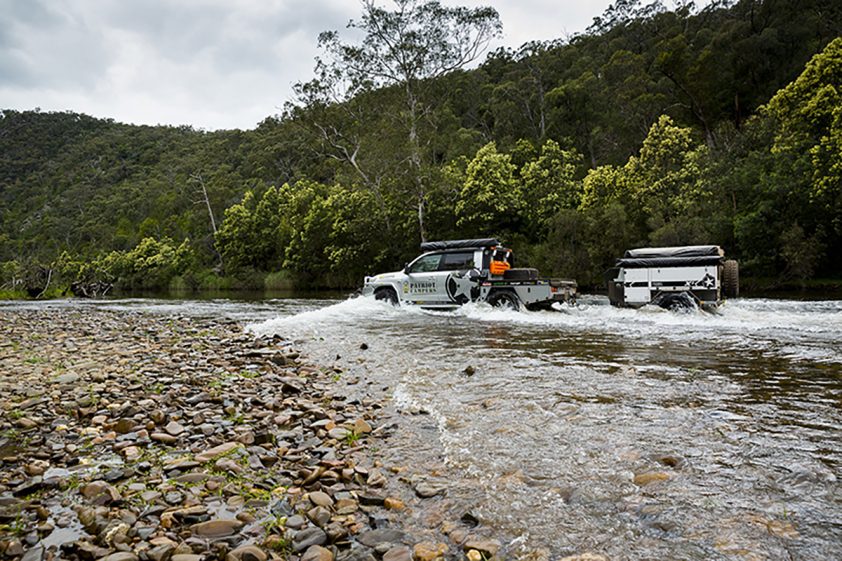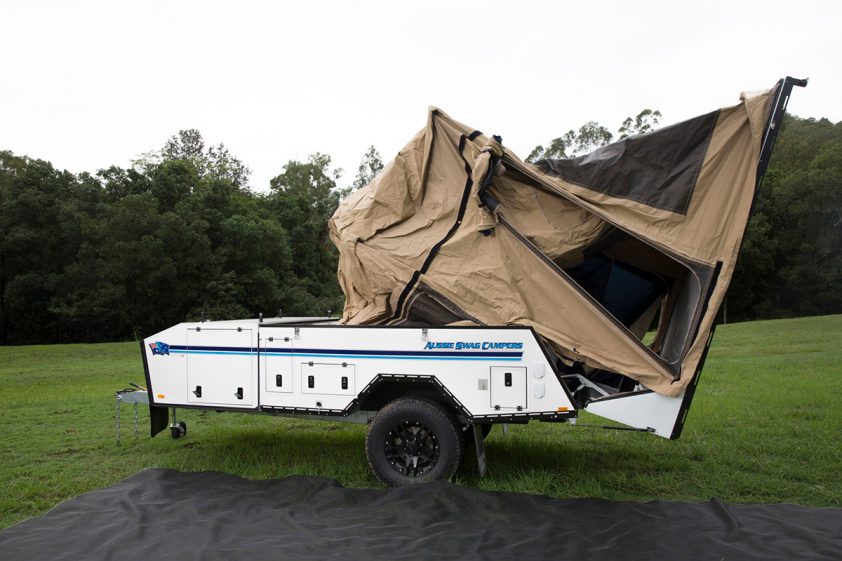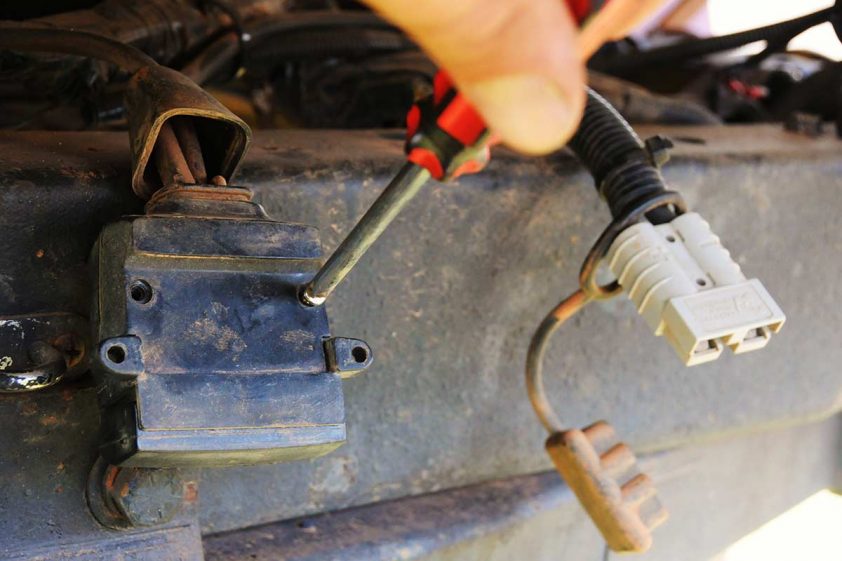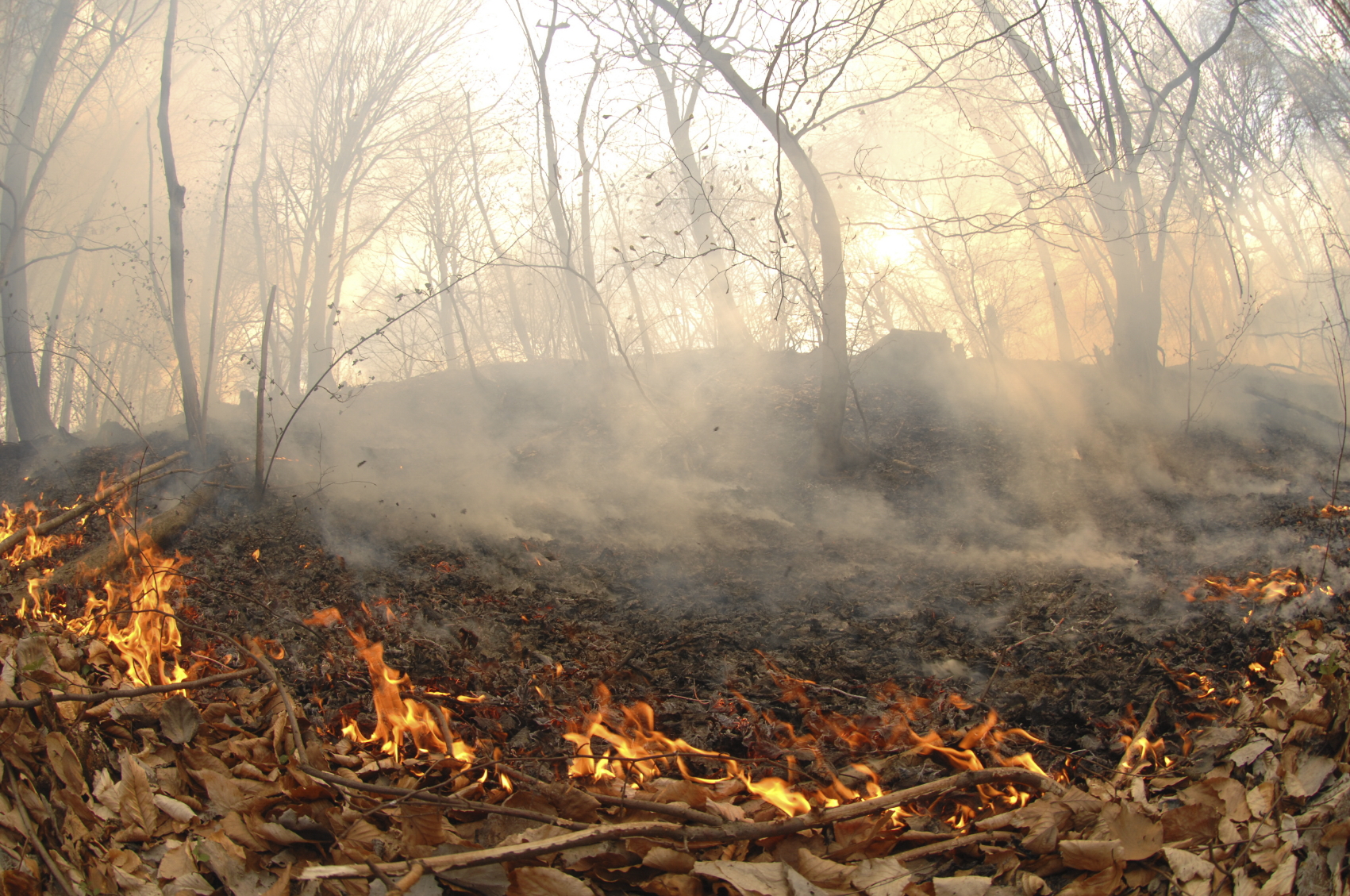1. COOL YOUR ENGINE DOWN
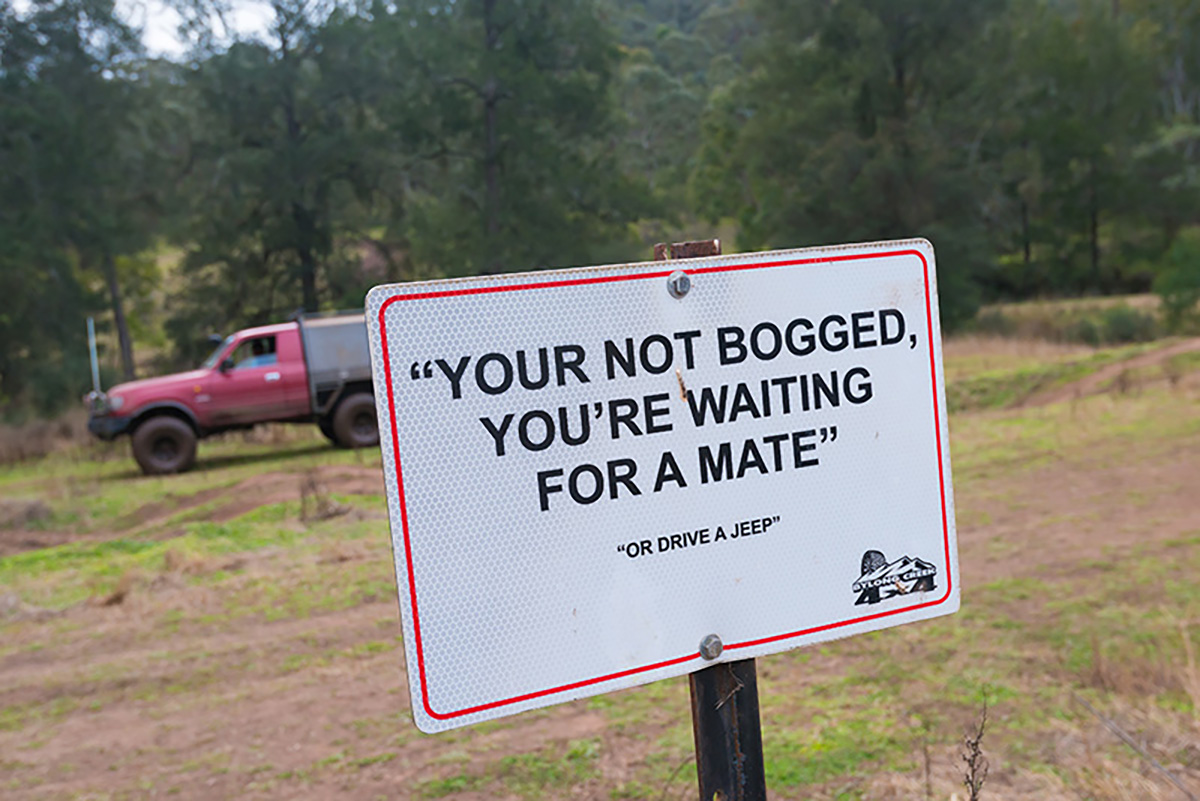
Hot engines and cold water are a recipe for disaster, so before you plunge across that next river crossing, you should stop and let your vehicle cool down first. Rapid changes in temperature are no good for your 4WD, and can lead to brakes steaming up or even distorting or breaking, hub seals becoming ineffective, or even the cooling fan and fins bending or breaking and impacting the radiator. So stop the vehicle and take five (or more!) before you get wet!
2. TEST IT ON FOOT FIRST
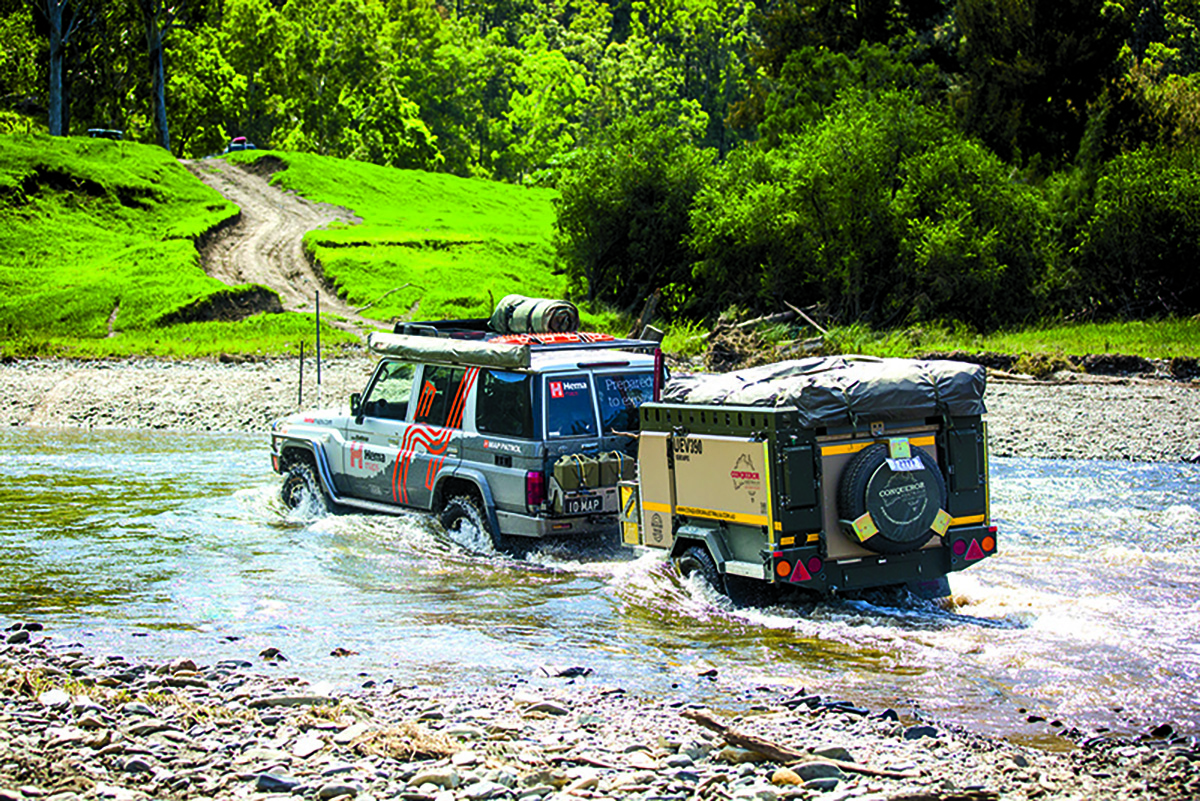
It’s rare to get stuck on a crossing you’ve walked first. Walking across will allow you to check its depth, bottom surface, find any obstacles, etc. It even pays to walk a dedicated causeway, as it can be impossible to know what the surface is like under the water!
The person you send across to check it out should have a good knowledge of 4WDing and towing, so they know what to look for. The obvious things are water depth, looking for any dips, low spots and holes, rocks and boulders, and finding a line with the most amount of traction.
However, it isn’t always safe to walk across rivers and causeways. Up north, salties are always looking for a snack, so if you’re in a croc-prone area, don’t do it. And don’t enter if the water is rushing fast, or you can’t see a safe line across. If you can’t walk it with ease, you shouldn’t drive it.
3. PICK YOUR LINE
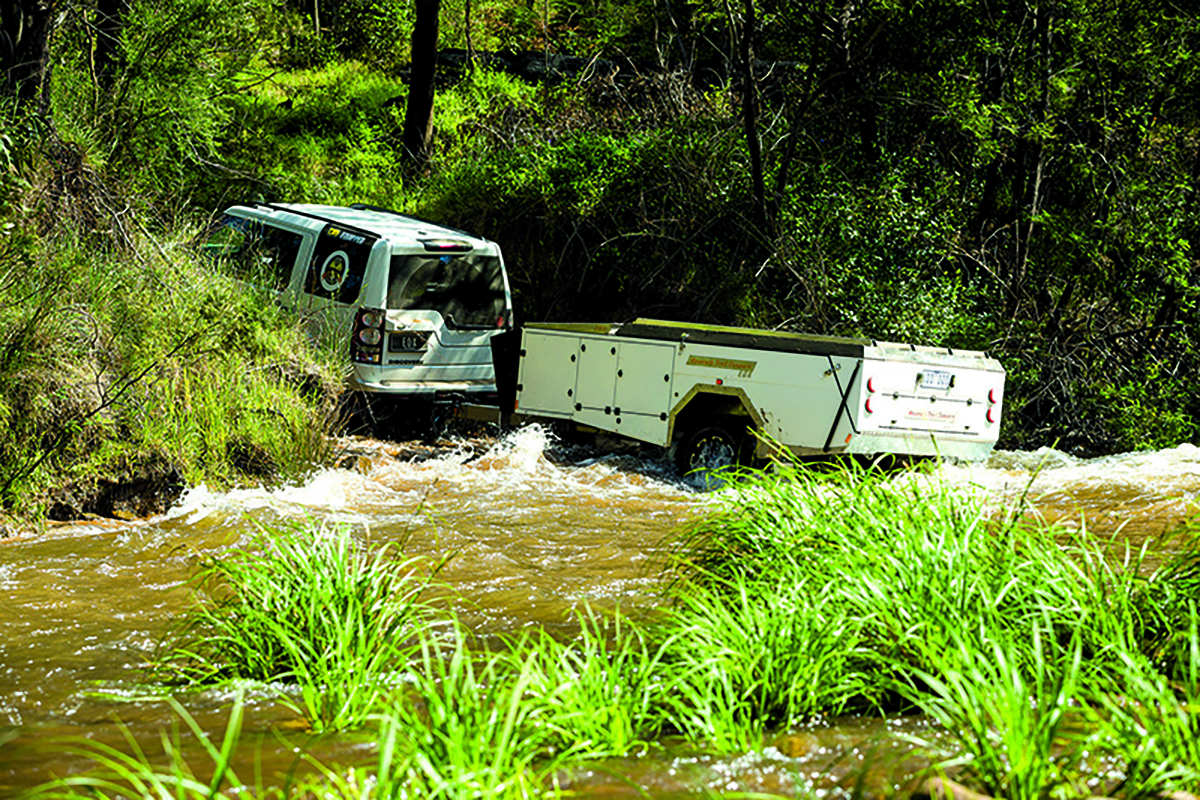
Once you’ve checked the crossing on foot, and you’re confident there’s a safe line across, pick that line and stick to it – this includes planning your entry and exit points. Make sure the line allows for the increased turning circle with a camper or caravan in tow, and has enough room to cater for a floating trailer if things go under!
4. GEAR SELECTION & SPEED
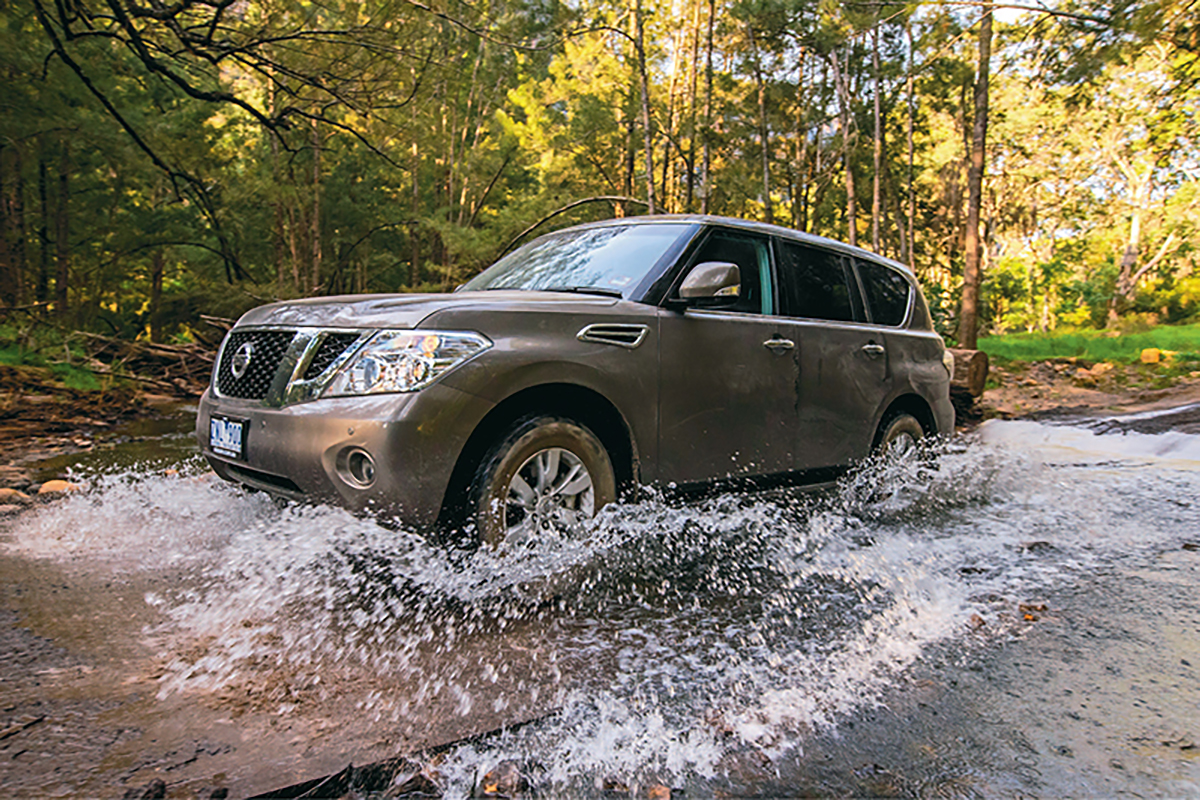
No matter your level of experience, you’ll want to use 4WD and low-range gearing for tackling any river crossing. Low range will give you maximum torque to push through the water, and you’ll have more control over your revs and speed. And, if you’ve got diff lockers, use them – you just can’t have too much traction! And avoid changing gear in the water, as the last thing you want is to stall halfway across. The correct gear selection goes a long way to preventing the engine from stalling. You need a gear that will give you enough speed to create a nice little bow wave, yet enough torque to push through the water without relying on pure vehicle speed, especially if it’s a bouncy, rocky river bottom.
If the engine does stall, try and start it up instantly, unless you think there could be water in the engine. In which case it would be advised not to restart the engine to avoid internal damage. Control your speed and aim for a nice, gentle bow wave in front of the vehicle, rather than a huge splash or rushing wave like you might see in the movies! Keeping the water low in front will help keep the water level lower in the engine bay.
5. HOPE FOR THE BEST BUT PREPARE FOR THE WORST

River crossings can be dicey at the best of times. Sure, chances are that’ll you’ll get across no dramas but, if you want to ensure your safety, and that of your passengers and vehicle, it’s best practice to treat every water crossing as if you’re going to get stuck halfway across.
So get your recovery gear out have it hooked up and ready to go. When you’re stuck in water, there’s only a small window of time in which you can get out and back on dry land before water gets in and damages everything in sight, so the last thing you want is to be mucking around trying to find your snatch strap.
And, while you’re at it, put any valuables and anything you don’t want to get wet up high in the vehicle and/or caravan/camper, and switch off any electrical accessories, such as fridges and inverters, to avoid the possibility of circuit damage
.
MEET THE AUTHOR
Michael “Borgy” Borg
Borgy’s one of those blokes who lives and breathes offroad adventure. He’s travelled to almost every extremity of the Australian continent, built 4WDs and camper trailers from the ground up and tackled some of the most epic adventures Australia has to offer.
Being a mechanic by trade, he’s customising both of his Toyota LandCruisers, ‘Toot’ the Troop Carrier and ‘Uncle Grump’, his big red 80 Series Cruiser. With plenty of tough low range kays under his belt, you can bet your bottom dollar he’s learnt the art of bush mechanic fixes. In fact, Borgy reckons relaxing around the campfire after an epic day on the tracks is what 4WDing is all about, not to mention that feeling of freedom you get when you lock in the hubs!

